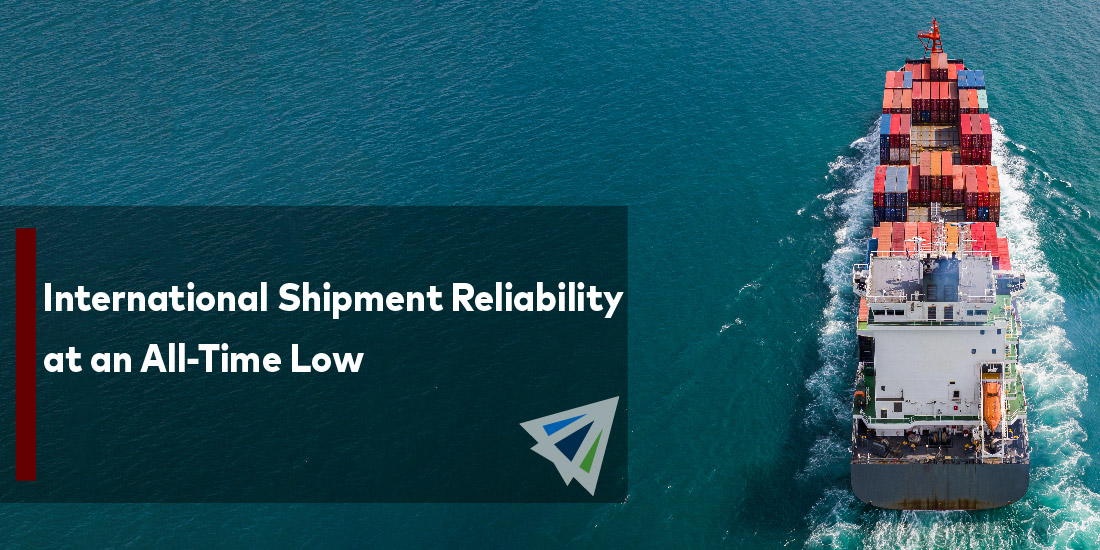International Shipment Reliability at an All-Time Low
Anyone who has been shipping internationally over the last two years understands that the market is incredibly unpredictable right now. Labor shortages, COVID outbreaks, strikes, equipment shortages, and congestion make up many factors playing into the volatility of the entire international shipping scene right now. And the problem is, things continue to look worse as time goes on.
Consumer demand is going up while port infrastructure and carrier readiness are not able to match. An unfortunate side-effect of these issues is that schedule reliability for shipments continues to drop and has reached a new low over the course of the last several months.
International Shipping Schedule Reliability Drops
Not everything is falling apart. In fact, several improvements are being made as ports rework their terminal operations and hours. They also are finding ways to streamline their grounds to avoid gridlocks with containers. Truthfully, throughput of containers is improving – albeit, slowly.
However, the efficiency of cargo moving through the port is not a direct indication that vessels and their cargo are arriving on time. While the average delay for late-arriving vessels has been decreasing, less than a third of carriers were reliably on schedule in November 2021.
Schedule reliability for international shipments has been steadily dropping throughout 2021, but in November, it nearly hit a new low. With a decline of roughly 0.6% month over month, by November, schedule reliability was only at 33.6%. The lowest month was in August of the same year, coming in at 33.4%.
How bad are these numbers really? The overall schedule reliability of global shipments in 2021 was roughly 36%. In 2020, schedule reliability throughout the year was averaged at 66%, meaning reliability has nearly been cut in half.
Reports show that the only two carriers who were able to maintain a schedule reliability of over 40% were Maersk and Hamburg Sud, both of which are less active in Asian shipping markets (where much of the demand and shipping congestion is being influenced by). Surprisingly, Maersk has been doing better than most carriers, being the only one to report a less than double-digit decline in year-over-year comparisons. The average decline experienced by most carriers was nearly 30%.
To make matters worse, while the overall container industry saw a reliability of 33.6%, that number was actually 24% for the 14 largest ocean carriers, which is startlingly low.
Are Solutions on the Way?
The word on the street in this industry is essentially: Don’t hold your breath. It is highly unlikely we will see any short-term actions make nearly as much of a recovery as the declines seen over the last couple of years. There is simply too great of an imbalance between demand and what ports and carriers alike are capable of handling.
Of course, carriers and ports are doing everything in their power to alleviate congestion. Los Angeles/Long Beach instituted container fees for long-dwelling cargo, opened certain terminals for 24/7 operations, and have taken steps towards an infrastructure improvement. However, all these efforts are making too small a difference to simply alleviate the reliability issues we are experiencing.
At this point, the best strategy for shippers is to build these delays and lack of reliability into their expectations and process. Use the chaos to your advantage by welcoming it rather than fighting it while we wait for the industry to sort itself out over the next couple of years.
Please reach to our team at InterlogUSA for more information or questions you have regarding your shipping situation.
